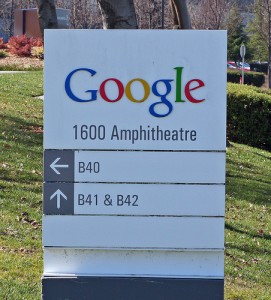I’m excited to learn that Ryan Avent has been reading Bottom-Up, and he has a really interesting post examining the implications of disruptive innovation on the growth and decline of cities:
When a metropolitan area has an old, successful, established industry as its economic driver, that area builds its infrastructure and institutions around that industry. These institutions are likely to be unwilling and unable to accomodate and support growth industries. We can think about legislators in a Rust Belt state who fight to protect old industries even when the protections they seek would undermine growth industries. Or banks in old manufacturing centers that are reluctant to invest in start-ups with sharply different practices from the old giants.
If you have a daring new idea, you don’t take it to someone who’s living fat off something which has worked for decades. You take it to someone who is hungry. Many of the Sunbelt boom towns which have sprung up over the past half century grew at the start by accepting what investment they could. I’m reminded of my hometown, where leaders were anxious to attract high-tech investments to their new Research Triangle Park. It was lack of better options that gave them the idea in the first place — something which might not have occured to leaders in a city where hundreds of thousands of people earned good union wages in manufacturing plants. And while leaders definitely wanted to craft a research environment, they took the investments they could get. Not having recently been on top of the world, they had the benefit of not suffering from wounded pride when less-than-glamorous operations came to invest.
This is a really good point. He goes on to explore some of the possible policy implications:
There are tricky implications to this. It suggests, for instance, that the availability of new metropolitan areas is crucial in maintaining a flexible, growing economy. That creative destruction doesn’t just mean the scrapping of once-proud firms but of whole cities. It also suggests that my previous prescription for fighting urban decline — a program of temporary fiscal support — could be counterproductive. It might delay inevitable economic adjustments.
 This seems right to me. The broader point here, I think, is that city leaders, like corporate CEOs, inevitably overestimate how much control they have over the overall direction of the complex ecosystems they nominally run. Once a negative feedback loop has started in a metropolitan area, there just aren’t that many policy levers available to reverse the process. Conversely, once a city has started benefitting from a positive feedback loop, as Detroit did 100 years ago and Silicon Valley does today, city governments can probably screw up a lot and still enjoy a healthy economy.
This seems right to me. The broader point here, I think, is that city leaders, like corporate CEOs, inevitably overestimate how much control they have over the overall direction of the complex ecosystems they nominally run. Once a negative feedback loop has started in a metropolitan area, there just aren’t that many policy levers available to reverse the process. Conversely, once a city has started benefitting from a positive feedback loop, as Detroit did 100 years ago and Silicon Valley does today, city governments can probably screw up a lot and still enjoy a healthy economy.
The main thing city leaders can do is ensure their cities offer fertile soil for new industries that could lead to positive feedback loops down the road. That means good infrastructure, reasonably low taxes, regulations that are predictable and not overly burdensome, and so forth. But disruptive innovation is intrinsically difficult to predict in advance, so efforts to promote specific industries or technologies—like St. Louis’s ongoing effort to transform itself into the Silicon Valley of biotech—are doomed to failure. Precisely because you can’t predict which disruptive technologies will prove important, it’s important to create a business climate that hospitable to businesses in general.


